
There will be 46 dance groups, that’s about 400 dancers and 100 musicians. Almost every variety of Morris dancing will be represented and we have a number of other national dance styles as described below.
Dancers will be performing from 10am to 4.30pm at 10 locations across the town centre (click here for our dance locations) and at the Tithe Barn from 3.30pm followed by a closing massed parade of all performers.
Note not all photos were taken at our event.
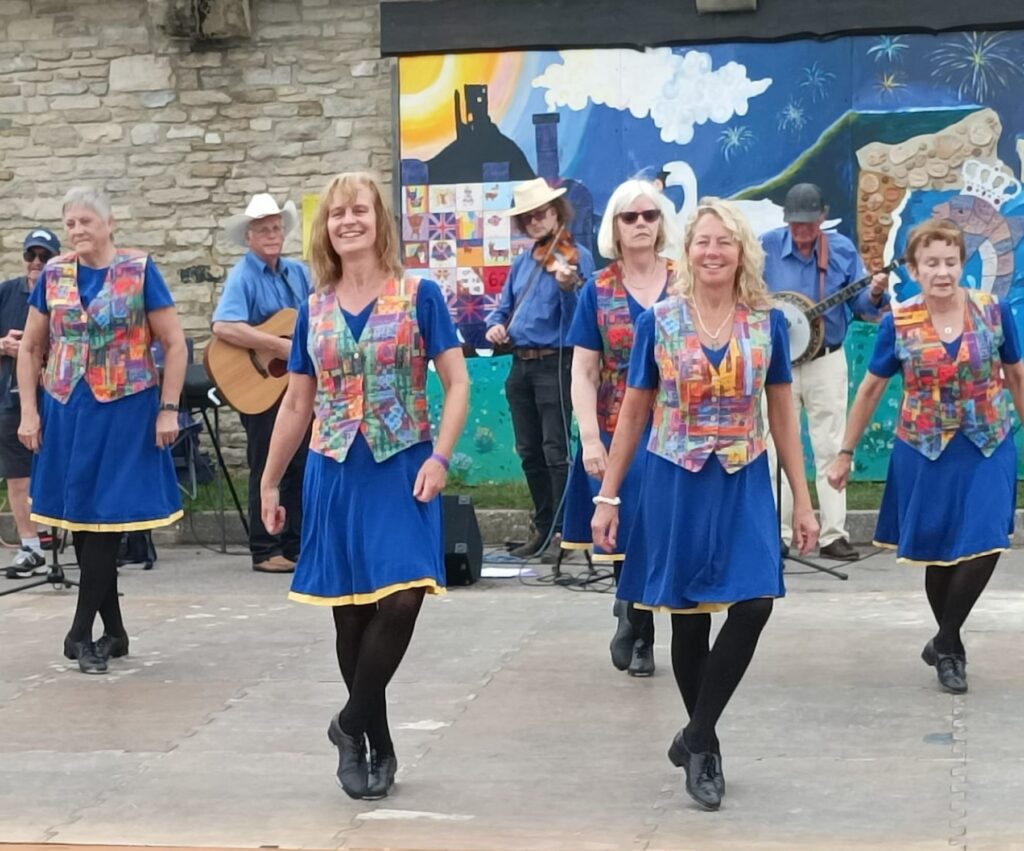
APPALACHIAN CLOG
The Appalachian style originates from the USA and incorporates steps from various European countries brought together by settlers.
- Cornucopia (Wantage) Dancing at BoA GMF
- Knickerbocker Glory (Alton) Dancing at Swanage
- Spank The Planks (Bournemouth) Dancing at Wimborne Minster
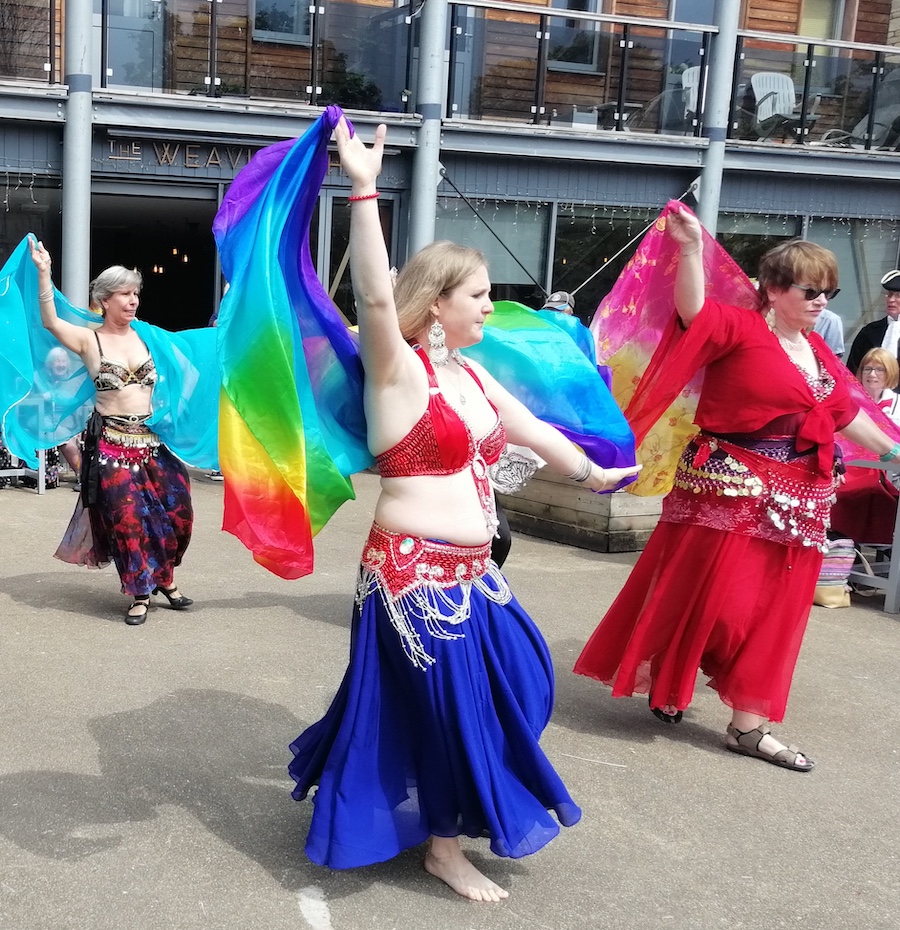
BELLY DANCERS
BORDER MORRIS
Border Morris, aka Bedlam Morris, originates from Herefordshire, Worcestershire and Shropshire and dates back to the 17th century. Wild dances, raucous dancers, driving rhythms and enthusiastic crashing of sticks. Stand well back! Dancers generally wear black with masses of highly colourful rag ribbons and elaborate headdresses, often featuring tall pheasant feathers. Traditionally Border dancers had blackened faces conferring anonymity on the dancers who were supplementing their income by a bit of illegal dancing and begging. The disguise was necessary so the performers were not recognised and then prosecuted for begging, or victimised by their landlords. Today, dancers often have a variety of colourful face paints.
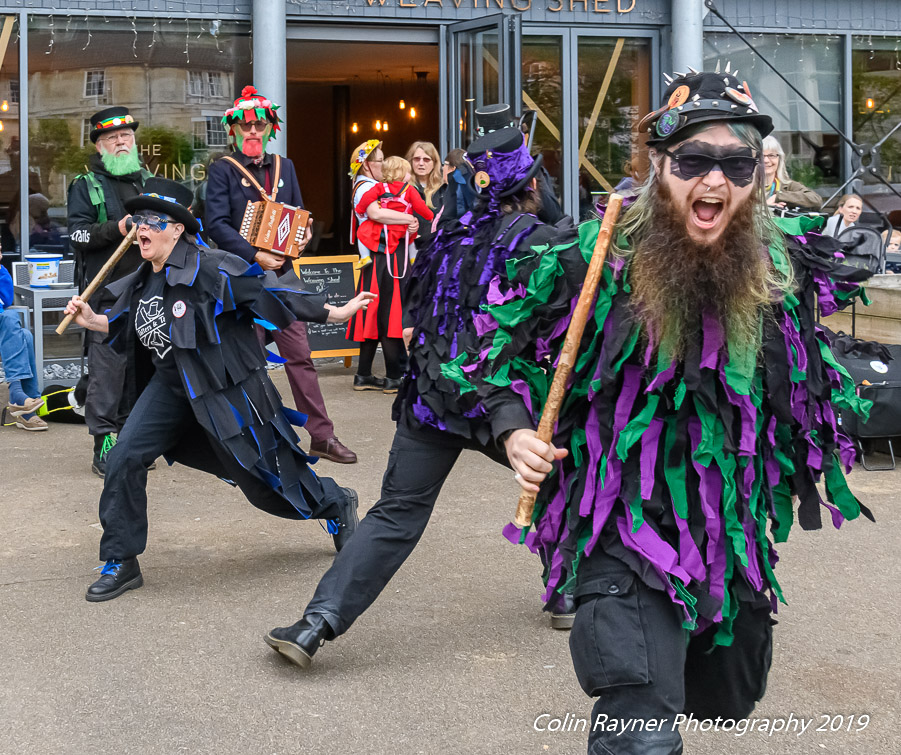
- Armaleggan (Cumnor, Oxford) Dancing at Brighton
- Borderline (Barnstable) Dancing at Swanage
- Bow Brook (Upton Snodsbury) Dancing at Bromyard
- Enigma (Stoke Sub Hamdon) Dancing at Weymouth
- Erstwhile (Feckenham) Dancing at Upton Upon Severn
- Hook Eagle (Hook) Dancing at Hook
- Kittiwake (Bristol) Dancing at Bridge Farm, Bristol
- OBJ (Bracknell) Dancing at Swanage
- Queen’s Oak (Yardley Gobion) Dancing
- Ragged Oak (Alvechurch) Dancing at Alvechurch
- Tattered Court (Cheltenham) Dancing at Gloucester
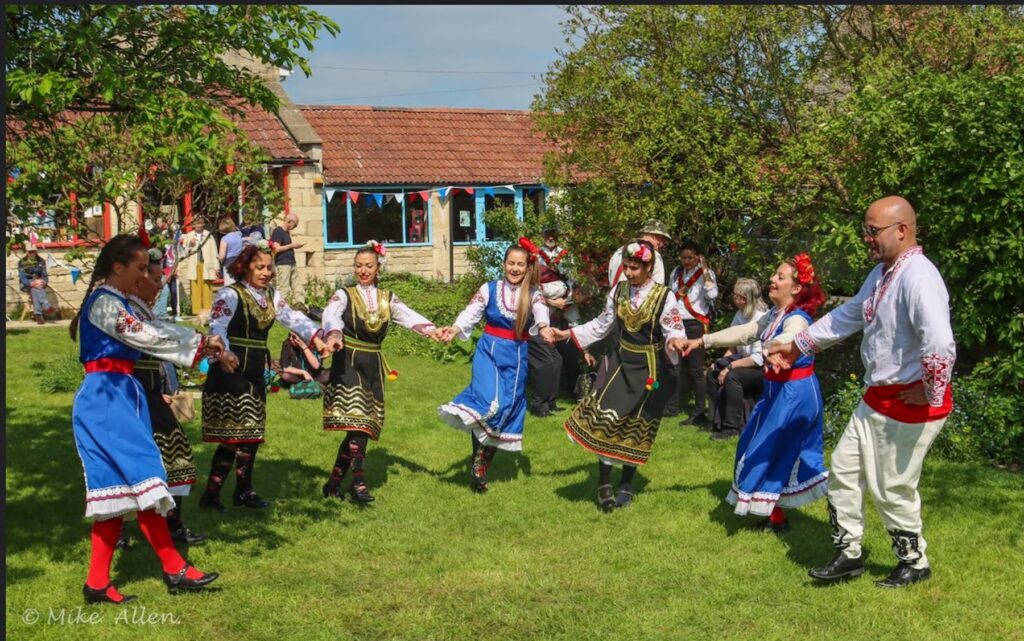
- Winterbourne Down (NE Bristol) Dancing at Winterbourne Down
BULGARIAN
CLOG & STEP
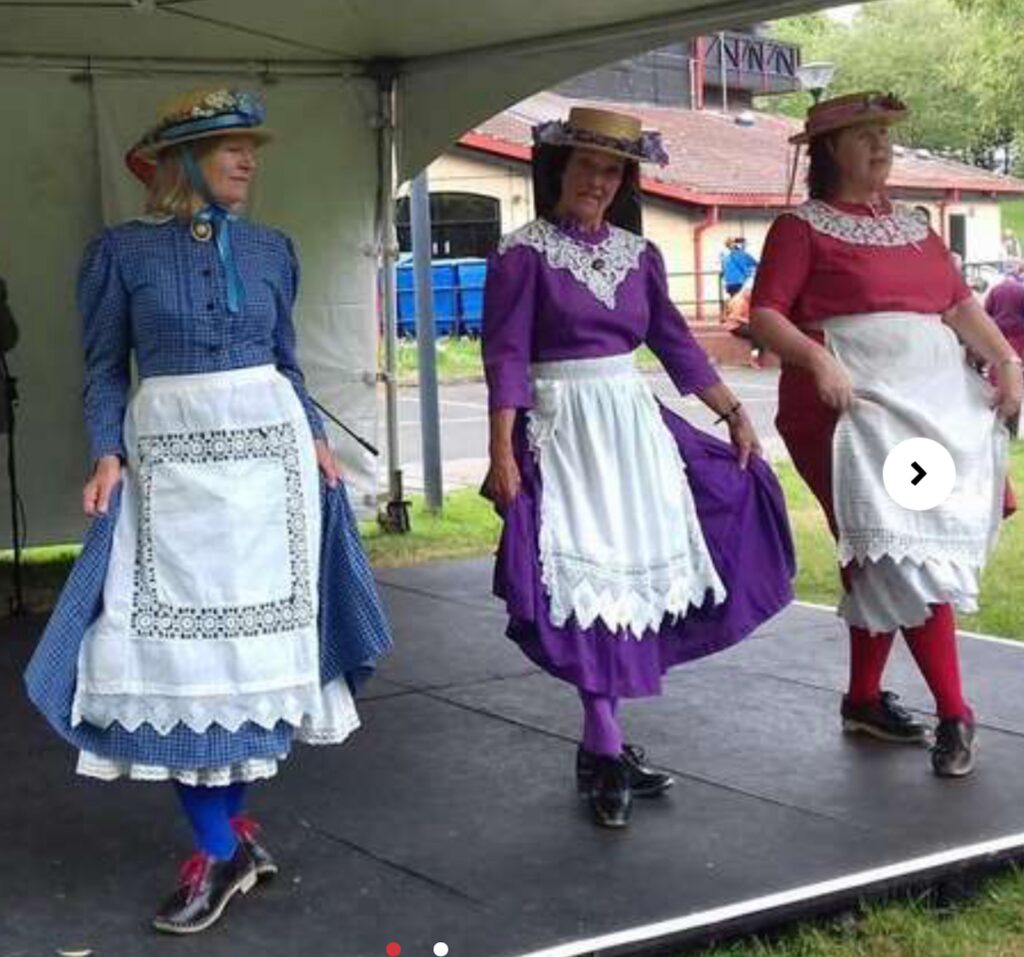
These dancers wear inflexible, wooden soled clogs. Clog/step dancing developed into differing intricate forms both in Wales and in the North of England – Lancashire, Yorkshire, County Durham, Northumberland and the Lake District. There are also several Canadian variations.
- Beetlecrushers (Gurney Spade) Dancing at Crosscombe
- City Clickers Clog and Step Dancers (Bristol) Dancing at Bath
- Cobbler’s Awl Clog Dancers (Cardiff) Dancing at Tredegar House
- Owlswick Morris (Bucks) Dancing at Great Kimble
COTSWOLD – “TRADITIONAL“
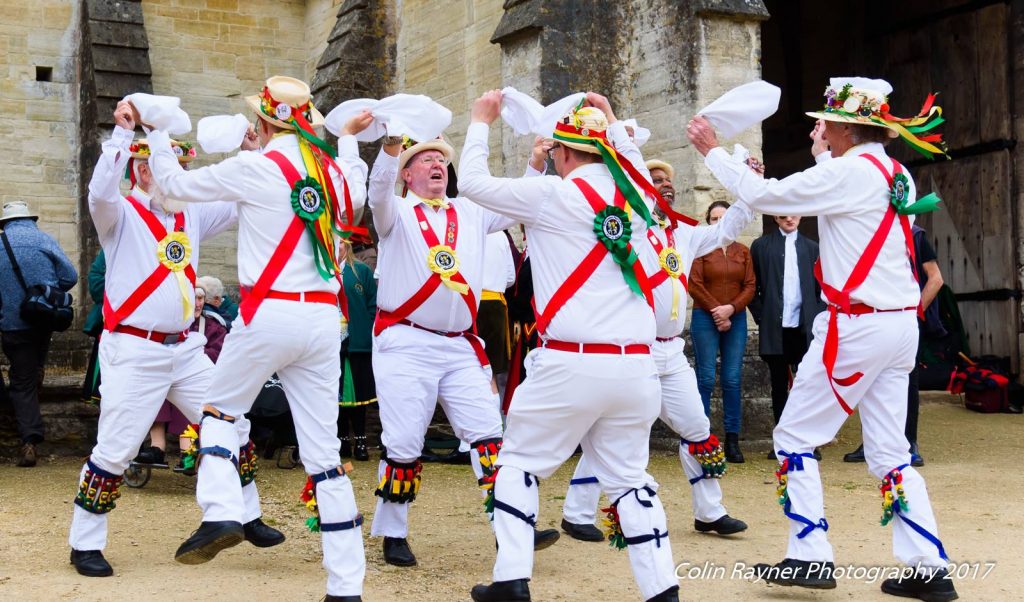
This is the oldest of all the Morris dance styles. Originating from Oxfordshire, Gloucestershire and Northamptonshire and where each village had its own quite distinctive dance steps and movements. Traditionally these sides were men only (some have women musicians) but over the years many ladies’ only sides have also appeared. 6-8 dancers, complex stepping, hankies waving, sticks crashing, bells jingling and sometimes with a hobby horse or a fool. They generally only perform Cotswold dances and usually dress all in white with coloured cross sashes and flowery hats.
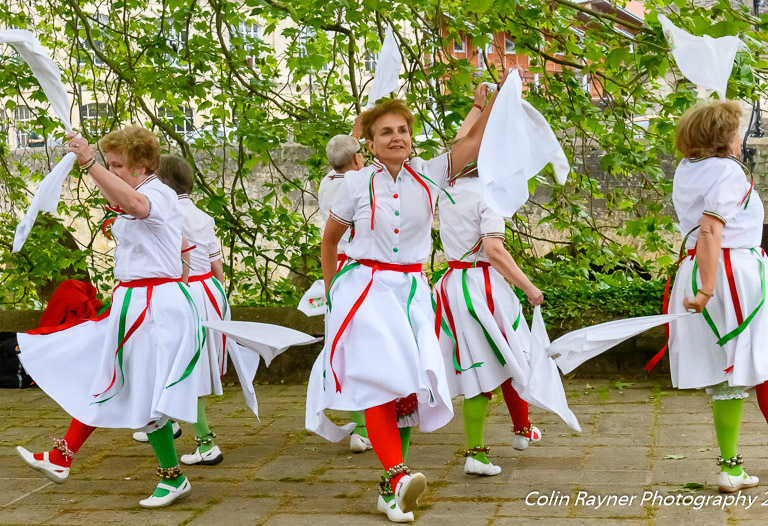
- Bell’s Angels (Holt, Wiltshire) Dancing at Wimborne
- Bounds of Selwood (Frome) Dancing at Stourhead
- Cam Valley (Priddy) Dancing at Wells
- Cogs and Wheels Morris (Sticklepath) Dancing at Hatherleigh
COTSWOLD – “MODERN”
These are mixed sides of men and women that also focus mainly on Cotswold dances but some include border dances as well. They generally have more colourful outfits.
- Full Moon Morris (S Wales) Dancing at Swanage
- Pigsty (Bristol) Dancing at Bristol Harbourside
- Rag Morris (Bristol University) Dancing at Bristol
- Winkleigh (Winkleigh) Dancing at Spreyton
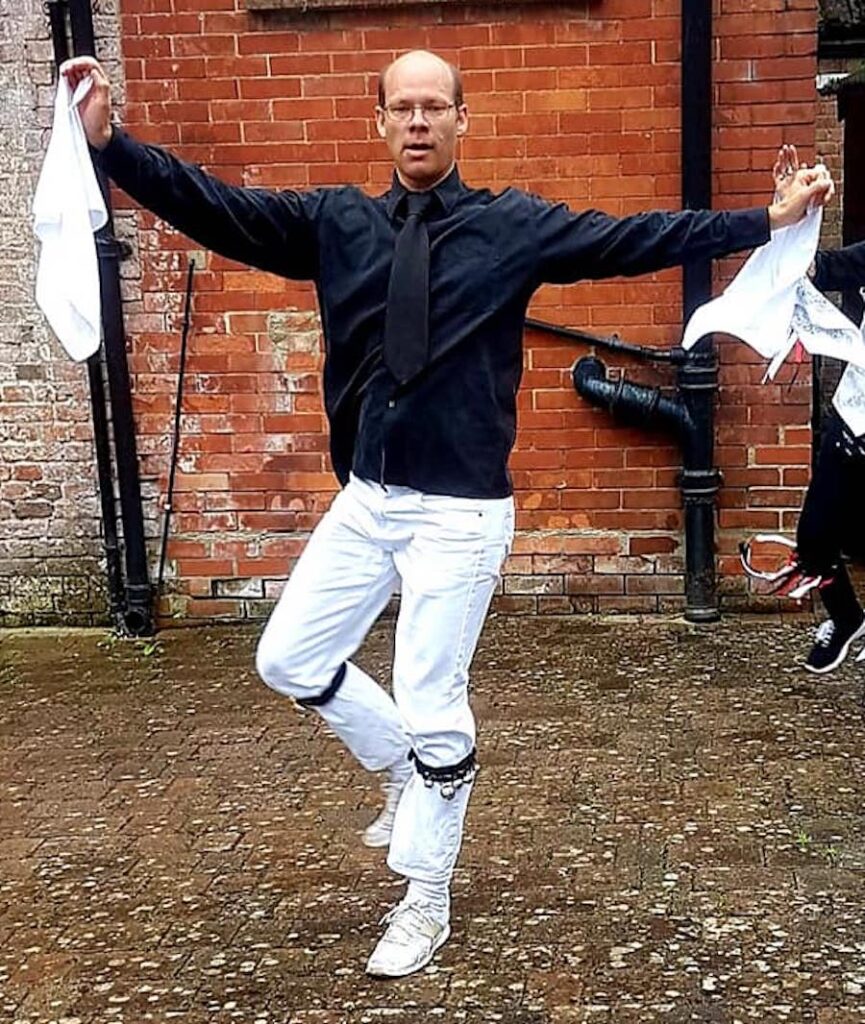
JIG
A solo morris dance, typically competition or show off dances and only danced by those considered to be the best dancers in a side.
- Knights of King Ina (Langport) Dancing at Wimborne
MOLLY
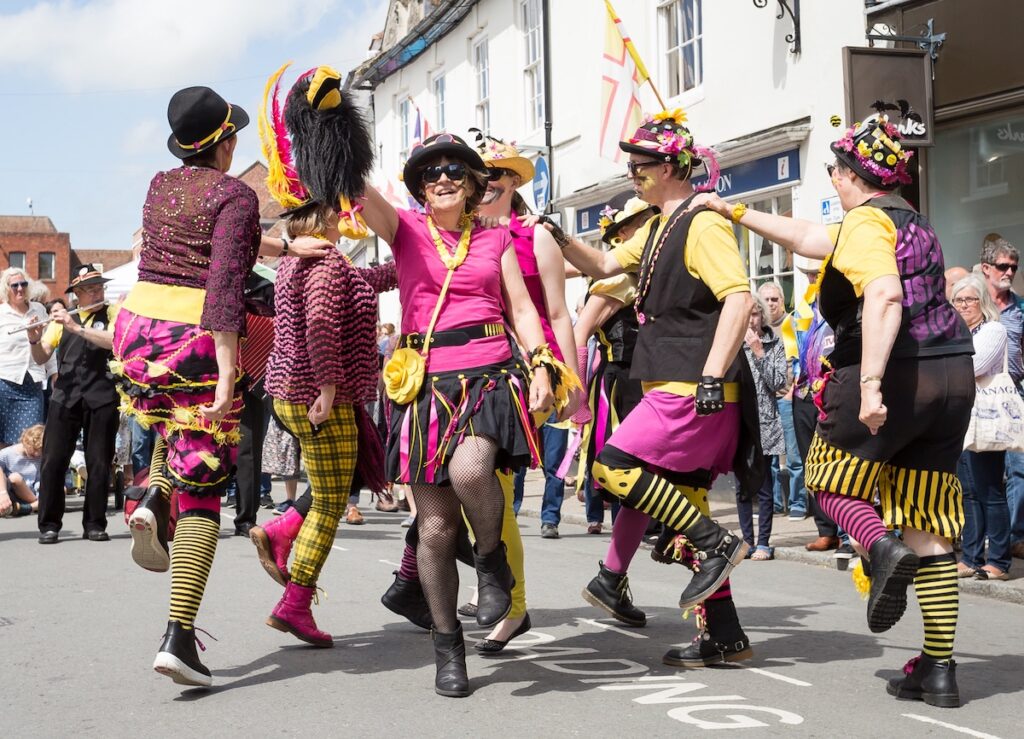
A high stepping style from East Anglia and the East Midlands. Dances were performed on Plough Monday by male farm-workers with one dressed as a woman and, like Border Morris, they were dancing for money to supplement their income so they concealed their identities by blacking their faces. Traditionally they wore a modified version of their Sunday best but modern dancers usually wear very colourful outfits and face paints.
SLOVAKIA
NORTH WEST CLOG

The most urban style of Morris dancing from the Lancashire and Cheshire woollen mills where workers sitting at the weaving machines wore hard-soled clogs with iron nails on the soles and heels, which they tapped to the rhythms of the machines to keep their feet warm. They dance with colourful decorated sticks and hoops which are symbolic of the mills’ bobbins and shuttles. Most clog dancing sides are female and their costumes are visually striking with broad sashes and generously flowered hats.
- Hips & Haws (Biddestone) Dancing at Stafford
- Mr Wilkin’s Shilling (Bath) Dancing at Chippenham
- Oyster Girls (IoW) Dancing at IoW
- Treacle Eaters (Yeovil) Dancing at Lyme Regis
RAPPER
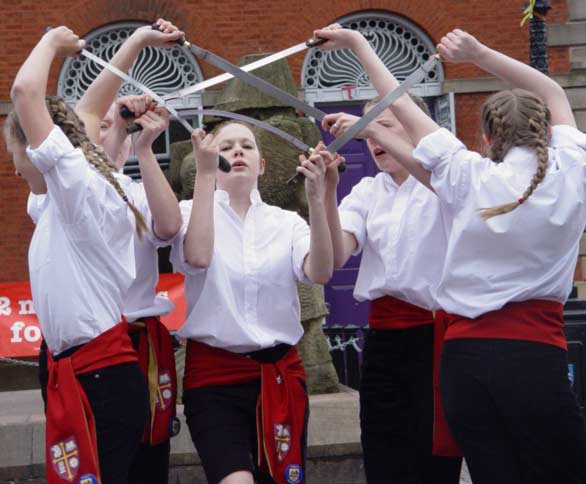
Sword dancing from the pit villages of Tyneside. Dances are performed at great speed by a team of five people continuously linked by short flexible swords called rappers. They weave intricate patterns at high speed, often with clog steps, moving smoothly in and out of complex shapes including forward and backward somersaults over the swords. A highlight is to weave the swords into a star shaped knot.
STAVE

A folk dance style from Somerset, Dorset and Wiltshire believed to originate from the nineteenth century ‘club walks’ of the friendly societies. Dancers carry long decorated poles, known as staves, over their shoulders whilst performing. There are only a handful of these dancers in the UK so we are extremely pleased to have bagged:
- Somerset Morris (Bristol & Bath) Dancing at Chippenham